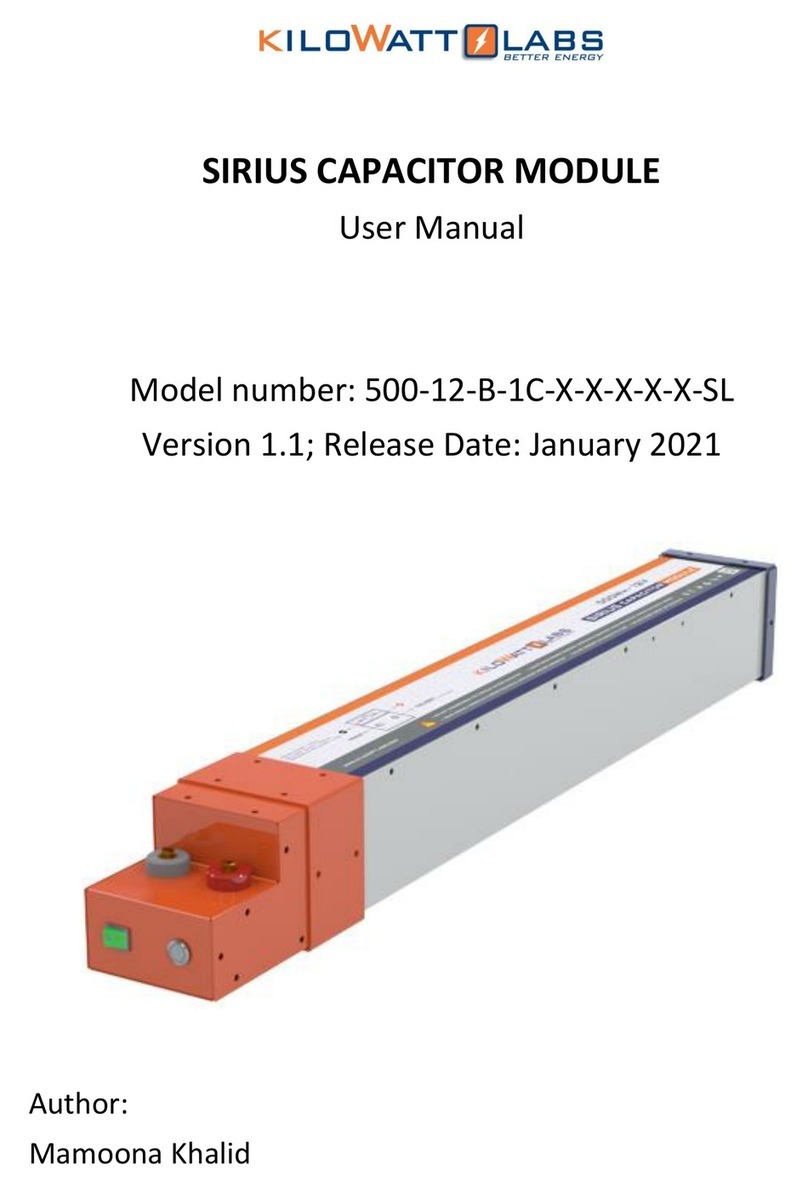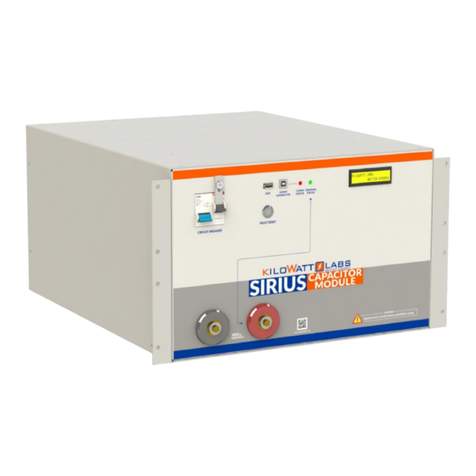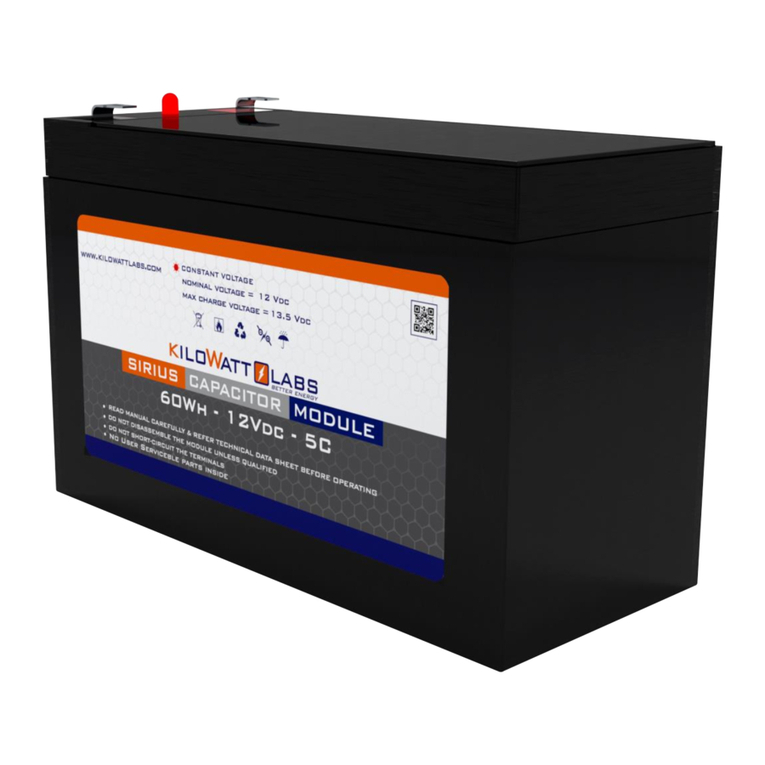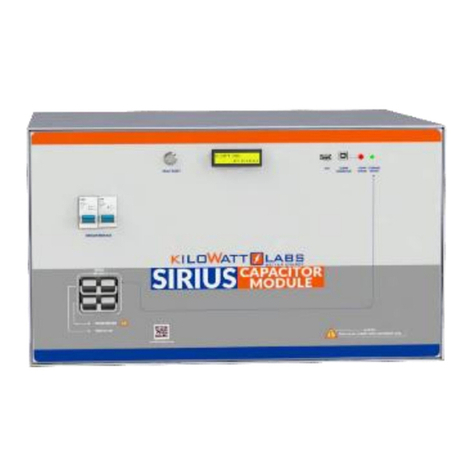Sirius Capacitor Module –User Manual Model Number -1000-48-B-1C-TM-A-G
This manual is subject to change without notice and at the sole discretion of Kilowatt Labs, Inc.
Kilowatt Labs, Inc. | www.kilowattlabs.com
3
Table of Contents:
1. Safety Instructions ....................................................................................................................4
1.1 Symbol Convention...........................................................................................................4
1.2 Safety Precautions ............................................................................................................4
1.3 Module Connection Safety Precautions ...........................................................................6
1.4 Shipping ............................................................................................................................6
1.5 Qualified Installer..............................................................................................................6
2. Product Introduction ................................................................................................................7
2.1 Product Part Number:.......................................................................................................7
2.2 Product Overview: ..................................................................................................................7
2.2.1 Appearance:.......................................................................................................................7
2.2.2 Mechanical Drawings.........................................................................................................8
2.2.3 Dimensions and Weight.....................................................................................................9
2.3 Product Description................................................................................................................9
3. Module Installation.................................................................................................................12
3.1 Inspection .............................................................................................................................12
3.2 Safety Gear............................................................................................................................12
3.3 Unpacking and Contents Check ............................................................................................13
4. Operation Procedures.............................................................................................................14
4.1 Module Configuration...........................................................................................................14
5. Electrical Installation...............................................................................................................15
5.1 Connecting Module to Power Supply .............................................................................15
5.2 Connecting Module to Load ...........................................................................................16
5.3 Connecting Modules in Parallel ......................................................................................16
5.4 Connecting Modules in Series ........................................................................................17
6. Recovery Procedure................................................................................................................19
7. Automatic Safety Alarm..........................................................................................................20
8. Trouble Shooting.....................................................................................................................25
9. Features ..................................................................................................................................27
9.1 Key Features........................................................................................................................27
9.2 Physical features.................................................................................................................27
10. Shelf Life..................................................................................................................................27
11. Maintenance...........................................................................................................................27
12. Disposal...................................................................................................................................27
































